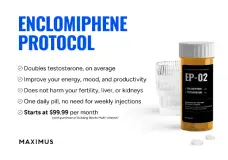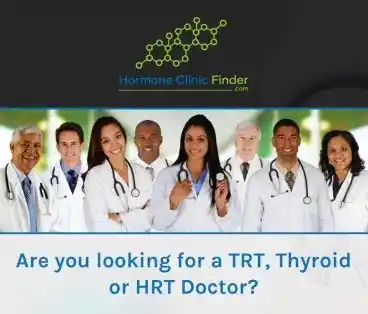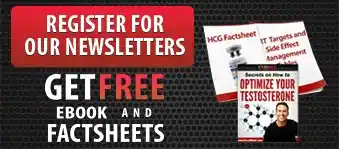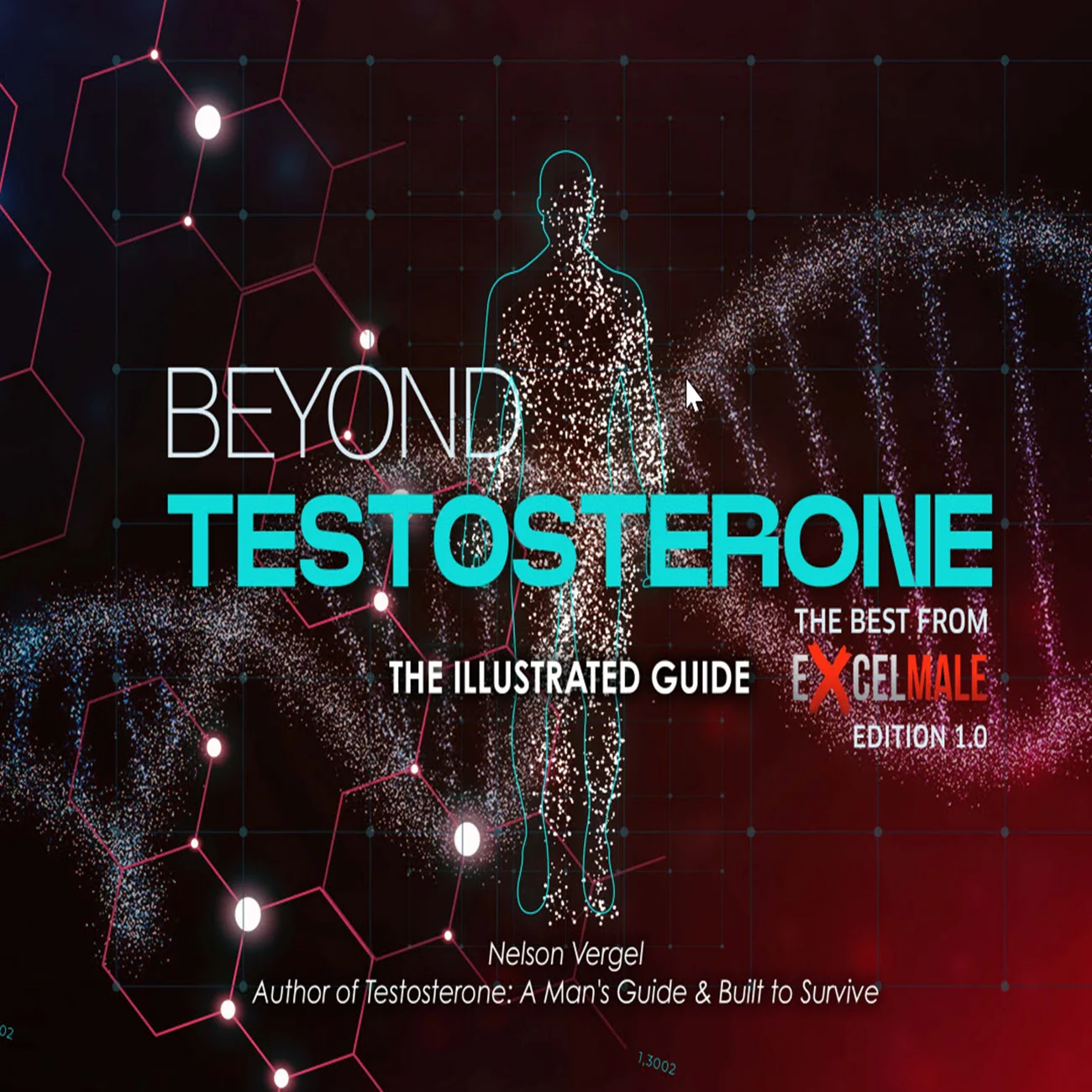Nelson Vergel
Founder, ExcelMale.com
Key human studies that have measured circulating IGF-1 after giving testosterone, clomiphene or enclomiphene
| # | Intervention (dose & route) | Study population & design | Treatment length | Mean change in IGF-1* | Notes |
|---|---|---|---|---|---|
| 1 | Testosterone enanthate 300 mg IM weekly | 11 healthy young men, double-blind crossover RCT | 6 wk | ↑ ≈ 15 % (Table 1: ~216 → 247 µg/L) | Rise occurred without GH change; nandrolone did not raise IGF-1 |
| 2 | Testosterone 100 mg IM q2 wk | 28 healthy men ≥65 y, placebo-controlled RCT | 26 wk | ↑ 22 % (≈112 → 137 µg/L) | Parallel 60 % rise in nocturnal GH secretion |
| 3 | Transdermal testosterone 5 g 1 % gel daily | 13 men ≥65 y with low T, vs AI or placebo | 6 mo | ↑ +15 µg/L vs placebo (p = 0.03) | IGF-1 rise required aromatisation; aromatase-inhibitor arm showed no change |
| 4 | Testosterone enantate 250 mg IM q4 wk (replacement) | 8 hypopituitary men already on GH | 5 wk | No change (352 ± 135 → unchanged) | Suggests T needs intact GH axis to raise IGF-1 |
| 5 | Enclomiphene 6.25–25 mg oral daily | 44 men with secondary hypogonadism, single-blind phase II RCT | 6 wk | ↓ ≈ 40 % (baseline 94–101 → 50-62 µg/L) | Fall greater than with testosterone gel (gel ~-13 %) |
| 6 | Enclomiphene 25 mg oral daily | 12 men with secondary hypogonadism, open-label | 6 mo | IGF-1 trended ↓ (numerical data not published) | IGF-1 measured alongside sperm endpoints |
| 7 | Clomiphene 50 mg oral daily | 16 male acromegalics uncontrolled on standard therapy | 3 mo | ↓ 41 % (424 → 250 ng/mL); 44 % normalised | GH unchanged; T rose 209 % |
| 8 | Clomiphene single 5-day course (50 mg bid) | 10 healthy women & 8 women with PCOS | 5 d | ↓ ≈ 23 % (297 → 230 µg/L in normals) | Decline not linked to androgen changes |
| 9 | Clomiphene (25–50 mg daily) | 142 hypogonadal men, retrospective cohort (2025) | 6–12 mo | ↓ median -18 µg/L; ↓≥30 µg/L in 27 % | Magnitude varied; no frank IGF-1 deficiency reported |
Patterns that emerge
- Testosterone therapy tends to raise IGF-1 modestly
- Acute or medium-term studies in eugonadal or older hypogonadal men consistently show a 15-25 % rise. The effect parallels increases in GH pulse frequency or mass and is blunted if GH secretion is fixed (hypopituitary patients) or aromatisation is blocked.
- Clomiphene almost always lowers IGF-1
- Whether given briefly to women or for months to men (acromegaly, hypogonadism), IGF-1 falls by 15-40 %. The drop is not accompanied by a fall in GH, supporting a hepatic, estrogen-receptor–mediated inhibition of IGF-1 synthesis.
- Enclomiphene behaves like clomiphene, not testosterone
- In the only detailed pharmacodynamic study, all doses reduced IGF-1 by ~40 % in six weeks, more than testosterone gel. Authors attribute this to ER antagonism at the liver despite rising estradiol.
- Magnitude matters clinically
- Even the largest falls with SERMs kept IGF-1 within the adult reference range in most subjects, so frank GH-deficiency symptoms were not seen.
- Testosterone-related rises were modest; reaching the upper-normal IGF-1 range is uncommon at replacement doses.
Mechanistic take-aways
| Mechanism | Testosterone | Clomiphene / Enclomiphene |
|---|---|---|
| GH secretion | ↑ GH pulse frequency & burst mass (requires aromatisation) | GH unchanged in most reports |
| Hepatic IGF-1 synthesis | Stimulated secondarily by higher GH & estradiol → net ↑ IGF-1 | Direct ER-α antagonism in liver → net ↓ IGF-1 despite unchanged or ↑ GH |
| Net IGF-1 direction | Slight-to-moderate increase | Consistent decrease |
Practical implications for clinicians & researchers
- Choice of therapy if IGF-1 optimisation is desired
- For men needing androgen repletion and wishing to augment IGF-1 (e.g., sarcopenia), exogenous testosterone is favourable.
- Clomiphene/enclomiphene are excellent for preserving fertility but will not raise—and may lower—IGF-1, something to monitor in patients with marginal IGF-1 or GH-sensitive conditions.
- Monitoring
- Measure IGF-1 at baseline and after 3–6 months when using SERMs, especially in patients with low-normal IGF-1, acromegaly under treatment, or bone health concerns.
- In testosterone therapy, a repeat IGF-1 can help confirm adequate oestrogen conversion and may explain gains in lean mass.
- Research gaps:
- Long-term (>1 y) IGF-1 data with enclomiphene are missing.
- Direct head-to-head trials of clomiphene vs testosterone on IGF-1/GH in the same hypogonadal male cohorts would clarify differential metabolic effects.
These consolidated human data show a clear divergence: testosterone replacement nudges IGF-1 upward via GH activation, whereas clomiphene and enclomiphene lower IGF-1, probably through hepatic anti-oestrogen action.












